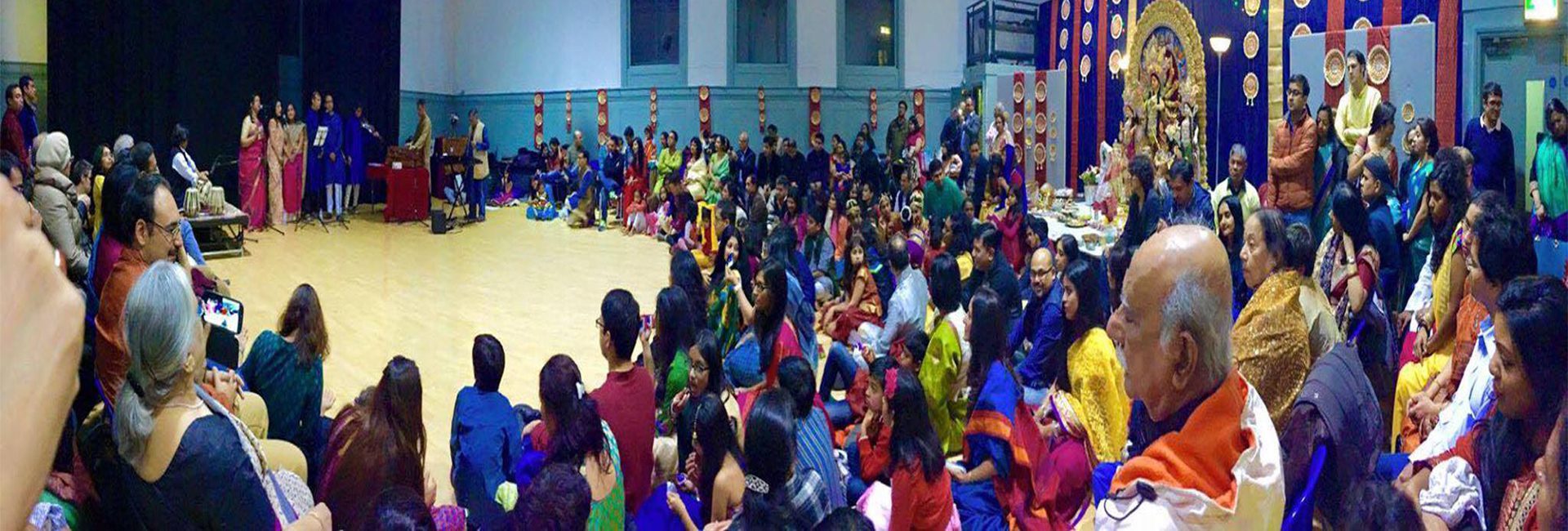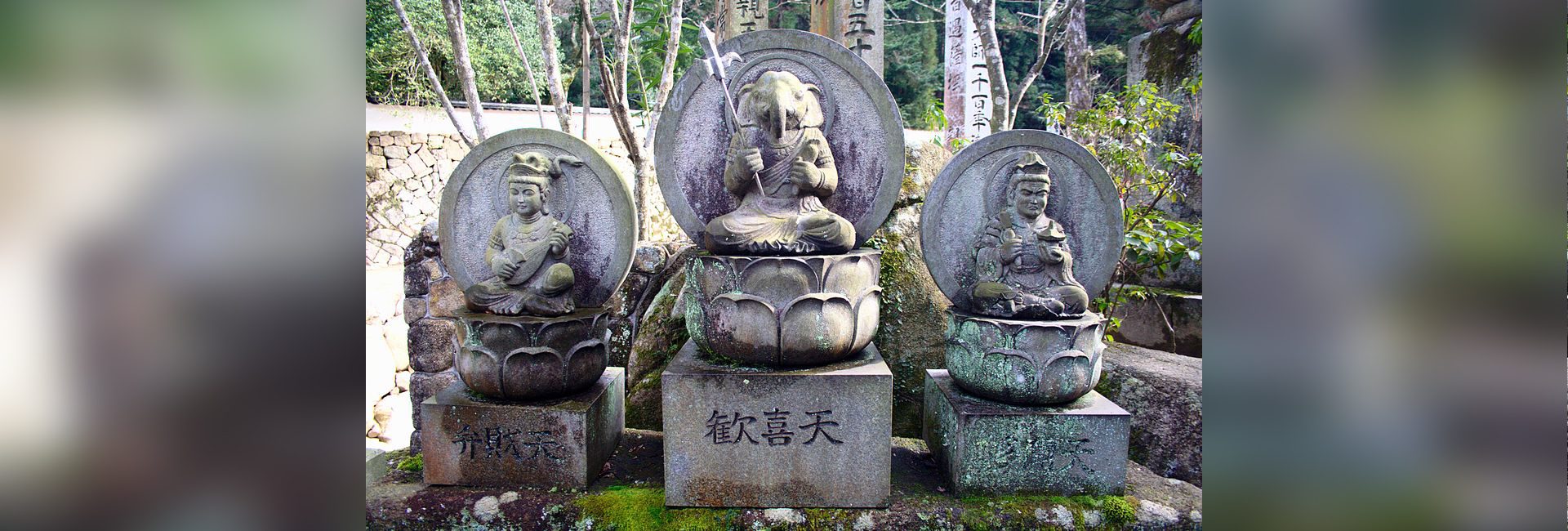(September 29, 2022) The conch shells have added festive fervour to the air much in advance this year. One of India’s biggest festivals and the most popular in West Bengal, ‘Durga Puja in Kolkata’ got inscribed in UNESCO’s Representative List of the Intangible Cultural Heritage of Humanity in December 2021. Entire eastern India and people of the diaspora are overwhelmed with happiness. It’s the first year of the ten-days festival (falling between 26th September-5th October this year), after UNESCO’s coveted announcement. West Bengal organised a massive “thank you” show on 1st September that took the shape of a street carnival with super-elated people beaming with unparalleled joy.

A glimpse from the thank-you show organised in Kolkata to thank UNESCO on September 1, 2022 | Photo credit : IANS
Soon after the announcement was made in December 2021, Eric Falt, Director of UNESCO New Delhi had conveyed his happiness in a press release:
I would like to offer warm congratulations to India, its people and especially all those who worked on the nomination dossier. I am confident that this inscription will offer encouragement to the local communities that celebrate Durga Puja, including all the traditional craftspeople, designers, artists, and organizers of large-scale cultural events, as well as tourists and visitors who partake in the inclusive festivity that is Durga Puja.
Like every year, this year too, artisans have worked day and night to meet the deadline of lakhs of orders for idols locally and from across the boundaries. Cultural fervour is hard to miss with performing arts, folk music, culinary, craft, and other traditional offerings all being geared up to add grandeur to the celebrations across the globe; especially when things were kept toned down for the past couple of years due to the pandemic.
Like the rest of the world, the organisers of Hamstead Durga Puja in London are experiencing a huge adrenaline rush as the countdown begins. It is the 59th year of the Puja which was started by a group of students back in 1963 in London.
The story of the oldest Durga Puja in the UK

Durga idol of Hampstead Durga Puja that is organised by London Durga Puja Dusserah Association
In the autumn of 1963, Durga Puja got organised for the first time in Maryward Centre, Russell Square, by a group of young Bengali students who formed the London Durga Puja Dusserah Association. Tushar Kanti Ghosh, the editor of the reputed newspaper Jugantar and publishing house Amrita Bazar Patrika was in London during that time. He was approached by the organising students to donate the Durga Pratima (idol of the goddess), which he gladly did. The enthusiastic students distributed leaflets at Piccadilly Circus and Oxford Street and raised funds from prominent members of the Asian community.

Devotees at Hampstead Durga Puja, London
The celebration of the first year was super successful and attracted communities from Edinburgh, Glasgow, and even from Germany. Gradually the community grew in size. The young student organisers were now married and had children, and the festivities started getting bigger and bigger. It started being popularly known as the Hampstead Durga Puja.

Ladies of the organising committee who seamlessly take care of rituals, bhog and other aspects devoting their time from much in advance
Prominent members of the diaspora have given their support and presence over the years to it. Lord Swaraj Paul (Indian-born British business magnate and philanthropist), Lord Raj Kumar Bagri (Indian-born British businessman and a Conservative member of the House of Lords), Nirmal Sethia (Chairman and Managing Director of N Sethia Group), and Satya Narayan Gaurisaria (Indian born British company secretary) have been some of the renowned patrons. The rich legacy of Hampstead Durga Puja started in 1963 continues with second and third-generation British Indians fondly embracing it.

A rare treasure – the brochure published by London Durga Puja Dusserah Association, back in 1979
Connecting from UK, Chandana Sanyal, Professor of Organisational Behaviour, Middlesex University, London tells Global Indian, “The celebrations moved to its current venue, (Hampstead Town Hall, Belsize Park, London NW3 4QP) in 1966. This is the oldest Durga Puja in London and we try to involve the younger generation as much as possible so that they stay connected and take the tradition forward.” She is the current secretary of the London Durga Puja Dusserah Association which is a registered UK charity.
The legacy is fondly carried forward…

The team behind the grand celebrations
We are a registered UK charity and our aim is community engagement, promotion, and celebration of the rich legacy of the Asian culture in the UK.
“There is an emphasis on the rituals, starting from bodhan, puja, anjali, and arati both in the morning and evening each day, and kumari puja, pratima baran, sindoor khela, and finally bisarjan.There are also lots of cultural programmes and children’s activities such as art competitions and quizzes, to teach the younger generation the nuances of the culture in a fun way, tells Chandana.

Former Deputy Mayor of Camden, London, Cllr Richard Cotton and his colleague at Hampstead Durga Puja, last year
“Kids have been making a significant contribution to the annual puja brochure through their written reflections, sketches, and artwork which mirror their perceptions of Durga puja. We involve them in activities like garland making etc. so that they learn to take responsibilities related to the festivities.” Away from India, the adults of the diaspora have been successful in engaging the younger generation to continue the celebrations for the last six decades.

Young performers of cultural programmes held during the puja
London Durga Puja Dusserah Association has been promoting local talents, creating a platform for them to showcase their skills and become confident performers. “This year our variety cultural programme will include dance recitals, contemporary songs, and a local music band,” says Chandana who sets aside five days of her annual leave to organise the puja seamlessly.

The resident boy band, Boyesh
Though there is no holiday in the UK for the festivities the members of the diaspora make a point to attend almost a week-long festivity without fail. Footfall on the premises is higher during evening time, even though the rituals and festivities are day-long. All get together to enjoy the cultural programmes that are practiced since days in advance. Both elders and youngsters enjoy bonhomie amidst performances.

Bhog – the integral part of puja
Contribution of Durga Puja, the significant soft power, to the Indian economy
In 2019 British Council carried out mapping of the creative economy around Durga Puja on behalf of the Department of Tourism, Government of West Bengal, and in association with the Queen Mary University of London, Indian Institute of Technology, Kharagpur, and Smart Cube, Bangalore. The sectors that the researchers focussed on were installation of art & decoration, idol-making, illumination, literature & publishing, advertising & sponsorship, films & entertainment, and crafts & design. Key takeaways of the report:
- The total estimated economic worth of the creative industries around Durga Puja is ₹ 32,377 crore.
- 92 percent of Puja organisers spend over 20 percent of their budget paying artists.
- Many artists from rural Bengal, earn a substantial portion of their yearly income during the festival. Even established artists find this time of the year to be monetarily the best with bookings of their dates much in advance both in India and abroad.
- Most of the artisan families who have been involved in idol-making both for India and across the borders are doing so over generations. Several businesses are more than 200 years old.
- Special puja edition magazines revenues amount to ₹15 crores.
To know more about UNESCO Heritage Tag, visit Intangible Cultural Heritage (ICH) website
Follow London Durga Puja Dusserah Association (Hampstead Durga Puja, Belsize Park) on its website, Instagram and Facebook




